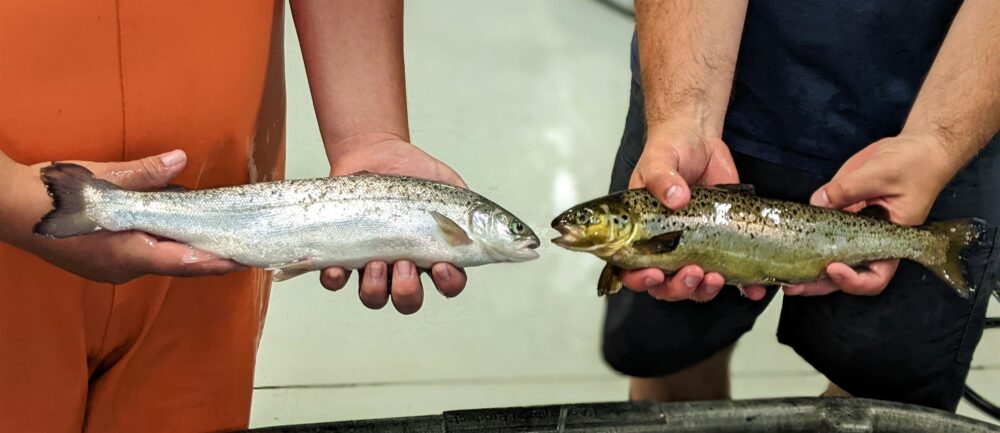Evaluation of Atlantic salmon strains in Recirculating Aquaculture Systems
FUNDED BY: USDA NATIONAL INSTITUTE OF FOOD AND AGRICULTURE
BACKGROUND
Currently, nearly 99% of the global production of Atlantic salmon are raised in ocean net-pens. These systems can have many environmental and regulatory challenges. Consequently, US production of Atlantic salmon in ocean pens continues to be threatened by regulation and loss of social acceptance. While production costs in ocean pens have increased dramatically over the past 7 years, US consumption of salmon has nearly doubled. Due to these factors, in order for Atlantic salmon aquaculture to expand in the US, other practices must be investigated. Subsequently, land-based production using recirculating aquaculture systems (RAS) technology may offer the industry a viable and sustainable means to expand domestic production.
THE PROJECT
To support the sustainable production of Atlantic salmon raised in recirculation systems, genetic lines need to be evaluated and developed for success in these systems. To support this, UWSP NADF and partners at the USDA Agricultural Research Service National Cold Water Marine Aquaculture Center (NCWMAC) in Orono, Maine, are evaluating two Atlantic salmon strains in water reuse systems. The strains evaluated are the St. John’s River strain and Gaspe strain, both currently utilized for commercial aquaculture production.
 Atlantic salmon strains evaluated at UWSP NADF: Gaspe strain (left) and St. John’s River strain (right).
Atlantic salmon strains evaluated at UWSP NADF: Gaspe strain (left) and St. John’s River strain (right).
Traditionally, the St. John’s River strain has been selected for growth in net pens for four generations, while the Gaspe strain has been selected in tanks for growth in freshwater systems for two generations. To evaluate performance, both strains of fish are being raised to market size in semi-commercial freshwater RAS at UWSP NADF and NCWMAC. To track feed conversion and growth, fish weights and lengths of each strain are recorded monthly. Tank densities are being maintained at a commercial level throughout the rearing period until fish reach market size of approximately 4 kilograms. At this time, each strain will be evaluated for: processing traits (fillet yield, head on gutted yield, gonadal somatic index), proximate and fatty acid analysis, fillet color, and early maturation.
THE IMPACT
Understanding how various Atlantic salmon strains perform in freshwater RAS will provide data to the industry on growth rates, processing traits and early maturation, with a goal to advance the production Atlantic salmon raised in RAS to support the sustainable production of local seafood.